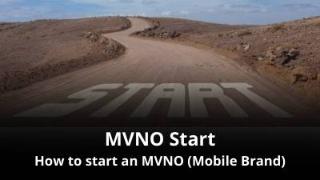How to create a Marketing Plan for your Mobile Brand (MVNO)
It is important to create a Marketing Plan for your Mobile Brand (MVNO). In the dynamic and competitive telecommunications industry, mobile virtual network operators (MVNOs) play a crucial role in providing affordable and innovative mobile services to consumers. However, you need to stand out in this crowded market. This requires a well-defined marketing strategy that aligns with your MVNO’s target audience, competitive landscape, and unique value proposition.
The MVNO Marketing Plan outlines the key elements essential for developing and executing successful marketing initiatives. It delves into various aspects, from market analysis and segmentation to brand identity, product positioning, distribution channels, digital and traditional marketing strategies, customer relationship management, and more.
By understanding the insights presented in your plan, your MVNO can effectively differentiate itself, attract new customers, and foster customer loyalty, ultimately achieving sustainable growth and success in the ever-evolving mobile industry.
As explained in “How to start an MVNO” there are at least 3 plans which are important to create, these are:
Here we give some guidance about what might be useful to put in your Marketing Plan.
Once you have created your Business plan, you’ll need to get your Marketing plan in order. Also referred to as Go-To-Market strategy. Begin by answering the following questions:
What is your Mobile brand identity?
Naturally you need to have a logo, brand name, website, and all these kinds of things what makes your Mobile Brand stand out to all the other ones. Always keep in mind what and where your target audience is for example if your target audience is younger, you’ll want to adopt hipper creative.
Your brand’s voice should match your customer.

How will you reach subscribers?
Equally important is the following. Will you sell directly to consumers, or will you use intermediaries such as retail stores or online marketplaces? In other words, what channels will you use to market to your target audience? For example, if your MVNO was designed for kids or teenagers, you might want to focus on Social Networks like Facebook, TikTok, and Instagram.
However, MVNOs can be designed for just about any segment: religions, political affiliations, sports clubs, even groups like “Bird Watchers of America.” Each of these segments have different habits, needs and interests, so you’ll want to choose your marketing channels according to your audience’s profile.
You also what to look at other segmentations, such as:
Mobile Brand Segmentation based on demographics
Age: The mobile telecommunications market can be segmented by age (e.g., teenagers and young adults) tending to use mobile phones more frequently than older demographics. Younger generations are more likely to use mobile phones for social media, gaming, and streaming video, while older generations may use them more for making calls and sending text messages.
Gender: There are some differences in mobile phone usage patterns between people. Men are more likely to use mobile phones for gaming and navigation, while women are more likely to use them for social media and shopping.
Income: People with higher incomes tend to have more expensive mobile phone plans and more advanced mobile devices. They may also be more likely to use mobile phones for data-intensive activities, such as streaming video and downloading apps.
Mobile Brand Segmentation based on usage patterns
Light users: Light users of mobile phones typically make fewer calls and send fewer text messages. They may use mobile phones for basic tasks, such as checking email and making occasional calls.
Moderate users: Moderate users of mobile phones use them for a wider range of tasks, including social media, gaming, and streaming video. They may also use mobile phones for navigation and productivity tasks.
Heavy users: Heavy users of mobile phones are the most engaged with mobile technology. They may use mobile phones for all aspects of their lives, including work, school, and personal communication.
Mobile Brand Segmentation based on preferences
Price-sensitive users: Price-sensitive users are most concerned with finding the cheapest mobile phone plans available. They may be willing to sacrifice features or network coverage in order to save money.
Feature-focused users: Feature-focused users are more interested in having the latest mobile phone technology and features. They may be willing to pay more for a plan that includes more data, international calling, or other features.
Brand-loyal users: Brand-loyal users are loyal to a particular mobile phone brand or operator. They may be willing to pay a premium for a plan from their preferred brand, even if there are cheaper options available.
There are various ways to promote your Mobile Brand




Free advertising
Make use of every “free” advertisement there is. Now you might think nothing useful is free but there are ways which can help and are actually a kind of marketing.
For starters, make sure the SEO on the website is optimized for your audience, you can ask newspapers to write an article, depending on your community there might be newsletters (digital or paper) in which you can be mentioned. Depending on your offer and audience people might want to write blogs and/or mention you online or in the community.
Paid advertising
For paid advertising you have many options such as newspaper advertising, radio, Google adds, Facebook, magazines, banners, stickers, billboards, bloggers, YouTube, Vloggers, etc. etc. It is very important that the marketing channel matches your audience. For example, most young people do not read newspapers and old people do not even know what a vlogger is.
Definitely some marketing lasts longer, for example a newspaper is in the trash the next day and a blog can be online and visited for months or longer. Keep in mind that you can only spend your money once so spend it wisely.
How and where will subscribers sign up for your services?
Will you open brick-and-mortar stores, set up an online retail site, rely on resellers, operate kiosks in malls or other commercial venues, etc. Or do you anticipate offering full self-service with full digital onboarding. Nowadays for full digital onboarding an eSIM is used. If you want to use an eSIM, or a combination of both, make sure your vendor and MNO support it.
This will give you an idea of where you want to go. From there, you can determine your anticipated marketing spend, how quickly you would like to scale up your marketing initiatives, what your personnel requirements are, and what tools and systems are necessary to make everything work.
100 Points as input to the Marketing Plan for your Mobile Brand (MVNO)
Developing a comprehensive marketing plan for your Mobile Virtual Network Operator (MVNO) or mobile brand is crucial for attracting and retaining customers in the competitive telecommunications industry. This comprehensive checklist covers various aspects crucial for developing a robust marketing plan for your MVNO or mobile brand. Adapt and customize these points to suit the specific goals, context, and market dynamics of your venture.
Here are 100 points to consider for your Marketing Plan for your Mobile Brand (MVNO).
Traditional Marketing Channels
- Consider traditional advertising channels (TV, radio, print) for broader reach.
- Sponsorship opportunities for events, sports, or community activities.
- Develop creative/impactful campaigns.
- Collaborate with local businesses for joint promotions.
Digital Marketing Strategies
- Develop a robust online presence with a mobile-friendly website.
- Invest in SEO for online visibility.
- Execute targeted online advertising campaigns
- Implement content marketing for thought leadership and brand awareness.
- Leverage influencers and/or brand ambassadors for online promotion.
Distribution Channels
- Define distribution strategy (online, retail, partnerships).
- Optimize the online user journey story.
- Establish partnerships with retailers for SIM card distribution.
- Implement effective logistics for device shipments.
Social Media Marketing
- Develop a social media strategy aligned with your target audience.
- Create engaging/shareable content on social platforms.
- Utilize social media ads for targeted reach.
- Monitor/respond to customer feedback on social media.
Unique Value Proposition (UVP) and Branding
- Define your Unique Value Proposition.
- Develop a compelling & memorable identity.
- Craft brand message that resonates with your audience.
- Align your branding with values/preferences of your customers.
- Consistent branding across all touchpoints.
Market Analysis and Segmentation
- Demographic analysis of your target market.
- Behavioral segmentation based on mobile usage patterns.
- Geographic targeting/regional preferences.
- Psychographic profiling of your ideal customers.
Product and Service Positioning
- Clearly communicate the features and benefits of your offering.
- Highlight any unique or innovative offerings.
- Position your products/services in comparison to competitors.
- Emphasize any exclusive partnerships or collaborations.
Public Relations (PR)
- Develop a PR strategy to generate positive media coverage.
- Engage with industry publications & journalists.
- Leverage press releases for major announcements or milestones.
- Manage crisis communications and address negative publicity promptly.
Pricing Strategy
- Create competitive/attractive pricing models.
- Consider bundling options for different customer segments.
- Implement transparent pricing to build trust.
- Evaluate the impact of pricing on profitability and market share.
More points to consider for your Marketing Plan for your Mobile Brand (MVNO).
Content Marketing
- Develop a content calendar for regular updates.
- Create informative blog posts related to mobile technology.
- Produce video content for educational and promotional purposes.
- Develop user guides, FAQs, and other helpful resources.
Incentive Programs
- Design and implement customer acquisition incentives.
- Develop referral programs for existing customers.
- Loyalty rewards for long-term customers.
- Exclusive promotions for specific user actions.
Market Expansion Strategies
- Plan for geographic expansion based on market demand.
- Research and understand cultural nuances in new markets.
- Tailor marketing strategies to new target audiences.
- Adapt to regulatory differences in new regions.
Email Marketing
- Build and segment an email subscriber list.
- Design visually appealing and mobile-friendly email campaigns.
- Implement targeted email campaigns for promotions and updates.
- Personalize emails based on user behavior and preferences.
Interactive Customer Experiences
- Develop mobile apps for enhanced user experiences.
- Chatbots for instant customer support.
- Utilize augmented reality (AR) campaigns.
- Virtual reality (VR) for interactive campaigns.
- Gamify user experiences for engagement.
Event Marketing
- Participate in or host events relevant to your target audience.
- Sponsor industry conferences or trade shows.
- Host launch events or exclusive gatherings.
- Engage with local communities through events.
Customer Education Initiatives
- Create educational content about your mobile services.
- Develop guides/tutorials for device setup/usage
- Conduct workshops or webinars on mobile technology trends.
- Address common customer queries through educational materials.
Partnerships and Collaborations
- Partnerships with other brands for joint promos
- Collaborate with influencers or celebrities for endorsements.
- Leverage partners for co-branded campaigns.
- Explore cross-promotions with non-competing businesses.
Customer Relationship Management (CRM)
- Implement a CRM system to collect, store, and manage customer data effectively.
- Utilize CRM data to personalize marketing messages and improve customer experiences.
- Segment customer data to identify cross-selling and upselling opportunities.
- Regularly communicate with customers for feedback and updates.
The last points to consider for your Marketing Plan for your Mobile Brand (MVNO).
Metrics and Analytics
- Identify Key Performance Indicators (KPIs) for marketing success.
- Utilize analytics tools for data-driven decision-making.
- Evaluate the ROI of marketing campaigns.
- Conduct A/B testing for campaign optimization.
Environmental & Social Responsibility Campaigns
- Develop sustainability campaigns or initiatives.
- Engage in social responsibility projects aligned with your brand values.
- Communicate your commitment to environmental and social causes.
Community Engagement
- Establish a strong online and offline presence in the communities served by the MVNO.
- Participate in local events, sponsor community organizations, and collaborate with local businesses.
- Foster a sense of community among MVNO users by organizing online forums, social media groups, and events.
Cross-Channel Marketing
- Create consistent messaging across all marketing channels.
- Ensure a seamless user experience both online and offline.
- Integrate online/offline promotions for synergy.
- Utilize customer data across channels for personalized experiences.
Customer Feedback and Surveys
- Implement customer satisfaction surveys.
- Collect feedback on specific services/features.
- Use feedback to make continuous improvements.
- Address customer complaints/issues promptly.
Mobile App Marketing
- Create a user-friendly and engaging mobile app that complements MVNO’s services.
- Promote the mobile app in various marketing channels, app stores, social media, etc.
- Integrate the app into the MVNO’s marketing strategy to enhance customer engagement.
Employee Advocacy
- Encourage MVNO employees to become brand ambassadors by sharing their experiences on social media and with their networks.
- Provide employees with training/resources to effectively promote the MVNO.
- Recognize/reward employees for their contributions to brand advocacy.
Emerging Technologies
- Stay informed about emerging technologies
- Innovate marketing strategies using new technologies.
- Leverage AI for personalized marketing.
- Explore virtual or augmented reality for immersive campaigns.
Campaign Measurement
- Establish clear objectives and KPIs for each marketing campaign.
- Implement analytics tools to measure campaign performance against established KPIs.
- Analyze campaign data to identify successful and underperforming strategies.
- Continuously refine/optimize marketing campaigns based on data-driven insights.
Frequently Asked Questions (FAQs)
What should a marketing plan for a mobile brand (MVNO) include?
A marketing plan for an MVNO should include target market analysis, brand identity, segmentation strategy, promotion channels, customer acquisition strategies, pricing, distribution plans, and measurement metrics. It outlines how you will reach subscribers and differentiate your mobile brand in the market.
How do I identify the right audience for my MVNO marketing?
Identify your audience by segmenting by demographics such as age, usage patterns, preferences, and price sensitivity. Understanding who your ideal customers are helps you select the most effective channels and tailor messaging that resonates with their needs.
What channels should I use to promote my MVNO?
Choose channels that match your audience and budget. This can include social media, SEO and content marketing, paid online ads, traditional advertising, retail partnerships, and influencers. The key is to align your promotional tactics with where your target customers spend time and how they discover mobile services.
How does segmentation help in an MVNO marketing plan?
Segmentation allows you to tailor offers and messaging to specific customer groups, such as heavy data users, price‑sensitive customers, or niche communities. By focusing on segment needs, you can increase relevance and conversion for your marketing campaigns.
Should an MVNO marketing plan consider digital and offline channels?
Yes. A balanced plan often includes both digital channels like social media, email, and search marketing, and offline channels such as events, retail displays, and traditional media when appropriate. The right mix depends on your audience and budget.
How do I measure the success of my MVNO marketing plan?
Measure success with KPIs such as subscriber acquisition cost, conversion rates, churn rates, campaign ROI, website traffic, and engagement metrics on digital channels. Regularly review these to refine your marketing strategy and optimize budget allocation.








